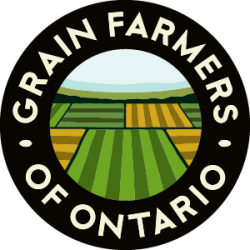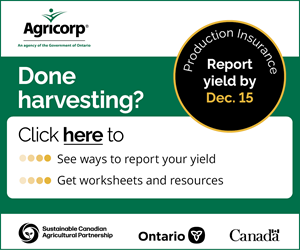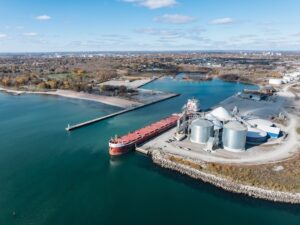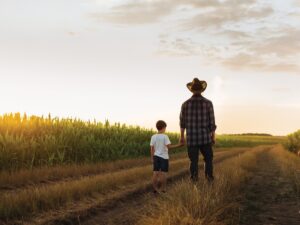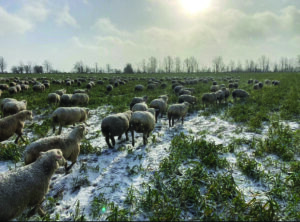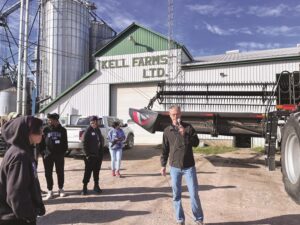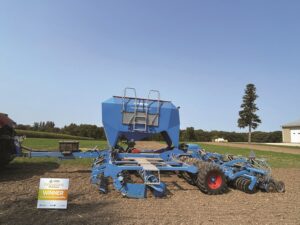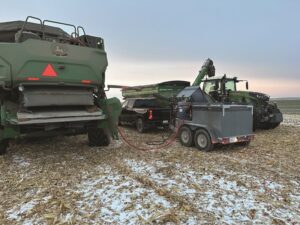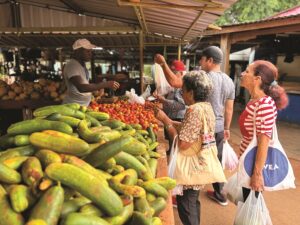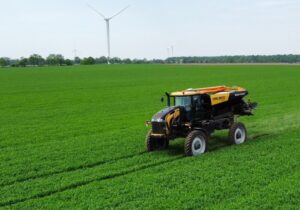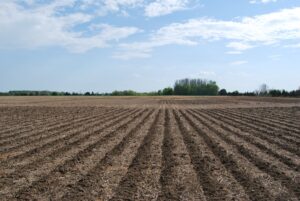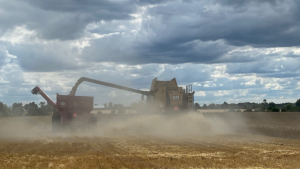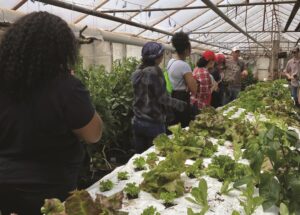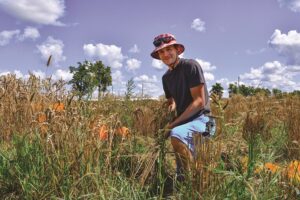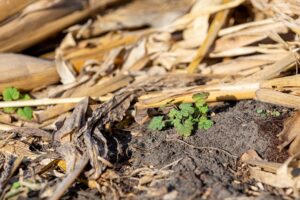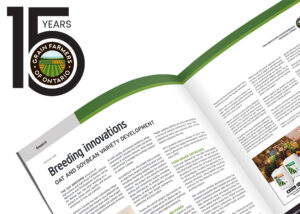Corn and soybean planting dates
STUDY SUPPORTS BETTER DECISION-MAKING

Spring planting of corn and soybeans is just around the corner, and Ontario’s grain farmers are always looking for new data on planting date decisions.
The weather, planting other crops, and more can get in the way of target dates for a given crop, but having the newest provincial guidelines is essential in reaching the goal of top yields.
“Using local datasets like the ones we’ve developed ensures that recommendations are tailored to Ontario’s specific environmental conditions,” explains Seth Ritsma, who is about to finish his master’s degree under the supervision of Dr. Dave Hooker and Dr. Joshua Nasielski at the University of Guelph.
But while early planting within the optimal window generally increases yields and avoids losses from late planting compared to normal planting dates (up to 41 per cent reduction in corn and up to 20 per cent in soybean), Ritsma cautions that every year presents potential exceptions.
“For example, in 2022 at Elora, prolonged emergence of soybean due to cool early-season temperatures combined with below-average rainfall during June and July—when early-planted soybeans enter their reproductive growth stage—resulted in slightly lower yields for the early planting date,” he says. “In this case, it wasn’t a very significant difference, but it highlights that early planting does not always guarantee higher yields, and outcomes depend heavily on seasonal weather patterns.”
IF CONDITIONS PERMIT
If there are conditions that support an earlier date, Ritsma says farmers should focus on two key decisions: which crop to prioritize for planting and when to switch crop maturity.
“Based on our findings, both corn and soybean achieved higher yields on average with early planting, so ideally both crops would be planted simultaneously to maximize yields,” he notes. “That can be impractical for many growers, so in choosing, take note that our results suggest corn should be prioritized. We saw corn yields declining more steeply than soybean yields with delayed planting, while soybean yields remained relatively stable.”
Regarding crop maturity, knowing when to switch to shorter-season or longer-season soybean cultivars/corn hybrids is critical for optimizing yield and profitability if planting dates are delayed. But first, Ritsma wants to provide context from the study’s economic analysis, which aimed to determine whether greater yields translated into greater profits. Fluctuations in crop prices and drying costs were included in the team’s evaluation of three profit scenarios:
Pessimistic Return: Lowest weekly five-year crop price and a 50 per cent increase in drying costs from the five-year average.
Optimistic Return: Highest weekly five-year crop price and five-year average drying costs.
Average Return: five-year average crop price and five-year average drying costs.
For soybeans at the Ridgetown and Elora locations, Ritsma, Hooker, and Nasielski did not detect any noticeable economic advantage to switching to shorter- or longer-season cultivars across any of these three scenarios. At Ridgetown, with early planting, yields were significantly reduced for both shorter- and longer-season cultivars compared to full-season cultivars.
At Elora, yields were significantly reduced for shorter-season cultivars, with no significant difference between full-season and longer-season cultivars. The trend of full-season cultivars producing the highest profits when planted earlier was also observed at the normal planting date at these locations.
However, at the Winchester study site, a longer-season cultivar consistently resulted in the greatest economic returns across all scenarios for both the early and normal planting dates. “This suggests that farmers may benefit from planting longer-maturity cultivars in some years, even under normal planting conditions,” says Ritsma.
However, when soybean planting was delayed until mid-June, there was no economic advantage to switching maturity from full-season to shorter-season cultivars at any location.
CORN RESULTS
For corn, across all locations, there was no noticeable economic advantage to switching maturity when planting early or at a normal time. In other words, full-season hybrids produced the highest profitability.
However, in contrast with soybeans, when planting was delayed to mid- June, switching to shorter-season hybrids provided greater profit. This minimizes the risk of hybrids failing to reach full maturity, but Ritsma notes that even if full- and longer-season hybrids do reach maturity when planted late, they have lower test weights and higher harvest moisture levels (higher drying costs), which generally overshadows any yield benefits.
FURTHER ANALYSIS
The comprehensive dataset generated by this study will be further analyzed to explore various effects associated with planting date decisions, hybrid/cultivar maturity, seeding rates, stand assessments, crop physiology and developmental rates, weather impacts, grain quality and economic risk assessment.
“After the data are fully analyzed and the conclusions are fully vetted and tested,” says Hooker, “the findings will contribute to the development of decision support tools and the refinement of recommendations for hybrid and cultivar maturity selection, as well as planting date management strategies.”
CORN & SOYBEAN PLANTING RECOMMENDATIONS SUMMARY 2025
- Aim to plant corn in late April to the first half of May to utilize the full growing season and maximize yields.
- Also plant soybean in late April or early May for the highest yield potential.
- New data shows that corn should be planted first, because yield declines are greater than soybean, if planting is delayed, even in higher crop heat unit areas similar to Ridgetown.
- Corn hybrid selection: Choose full-season hybrids for early and normal planting dates to achieve the highest yields. For late planting, shorter-season hybrids are best, as always.
- Soybean variety selection: Contrary to current recommendations, this study shows that with early planting, corn yield was almost always greater with a longer-season hybrid and in Winchester for soybeans as well. That is, says Nasielski, you don’t need a longer-season corn hybrid to take advantage of early planting, but it appears to help. Ritsma says crop breeders, knowing typical planting dates for farmers in their region, adapt varieties (full-season) to local photothermal regimes and growing season lengths, selecting for traits (e.g. yield) while ensuring that grain-fill is completed before the first killing frost. These adapted varieties are based on when planting ‘typically’ occurs in Ontario. When planting occurs earlier or later than the typical planting date, it’s been thought that crop maturity should be increased or decreased as the growing season has been extended or shortened.
- Soybeans planted after wheat after July 15 are highly risky, especially with full-season or later cultivars.
- Use soybean seeding rates between 130,000 and 160,000 seeds per acre to balance yield potential and seed costs. Adjust rates based on soil conditions and expected emergence.
- Monitor for corn diseases like tar spot, especially with delayed planting. Select hybrids with better disease tolerance and consider fungicide application, if necessary, especially with late plantings.

